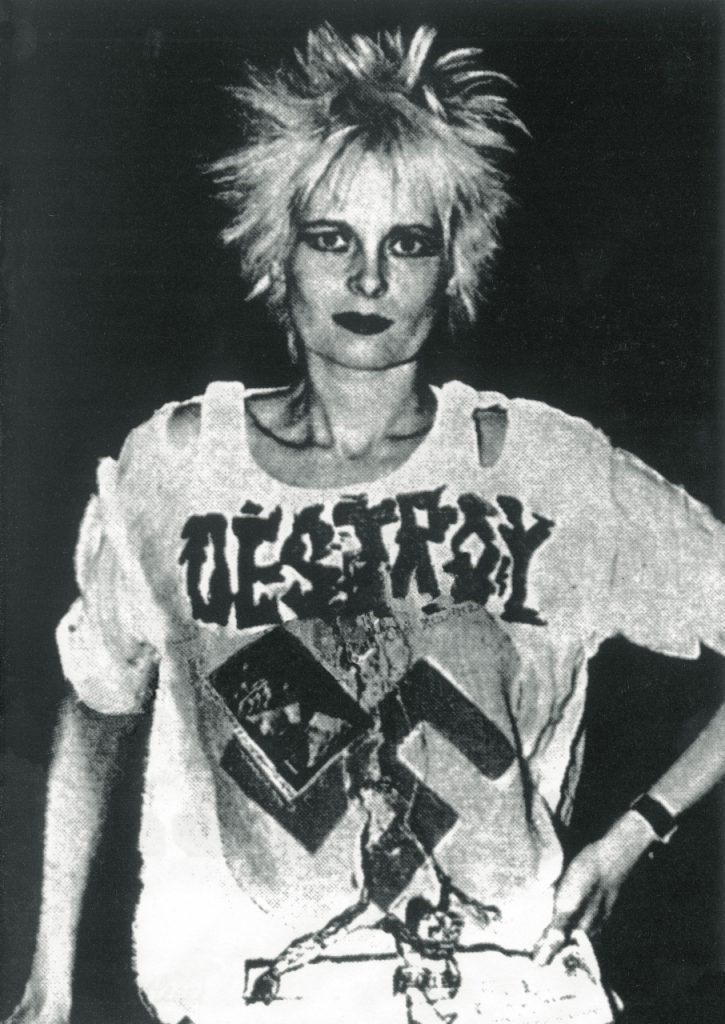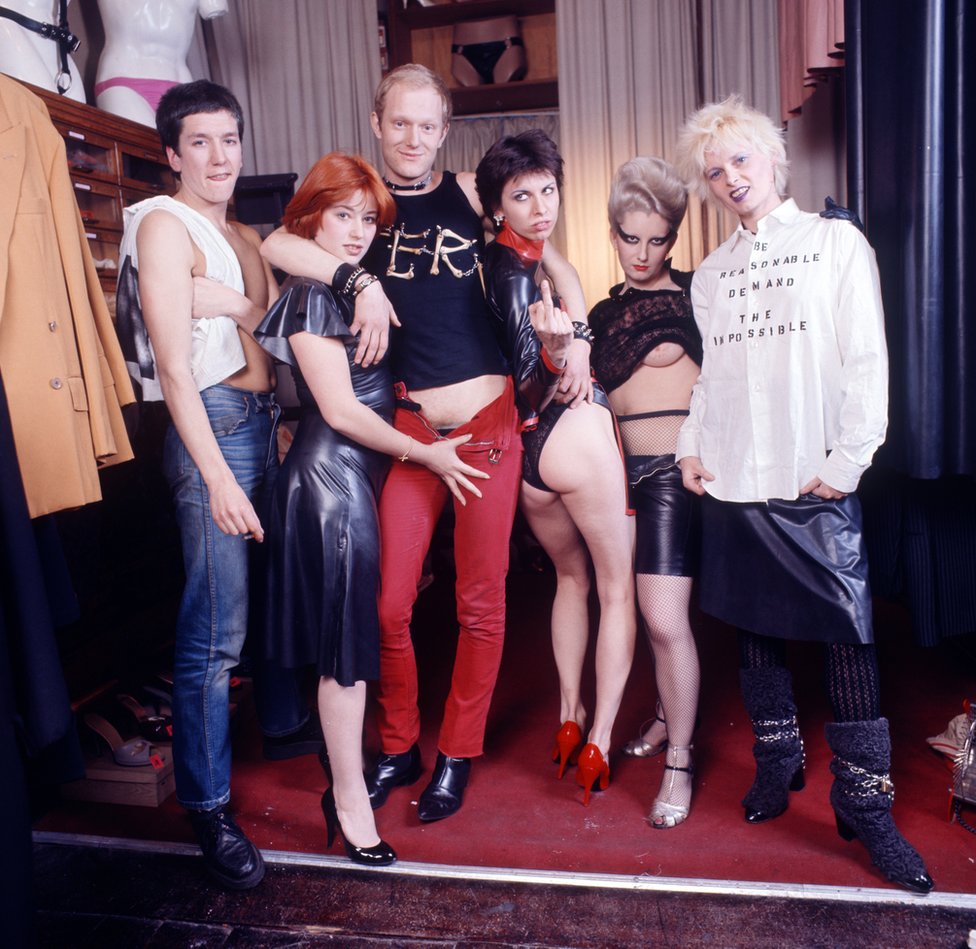


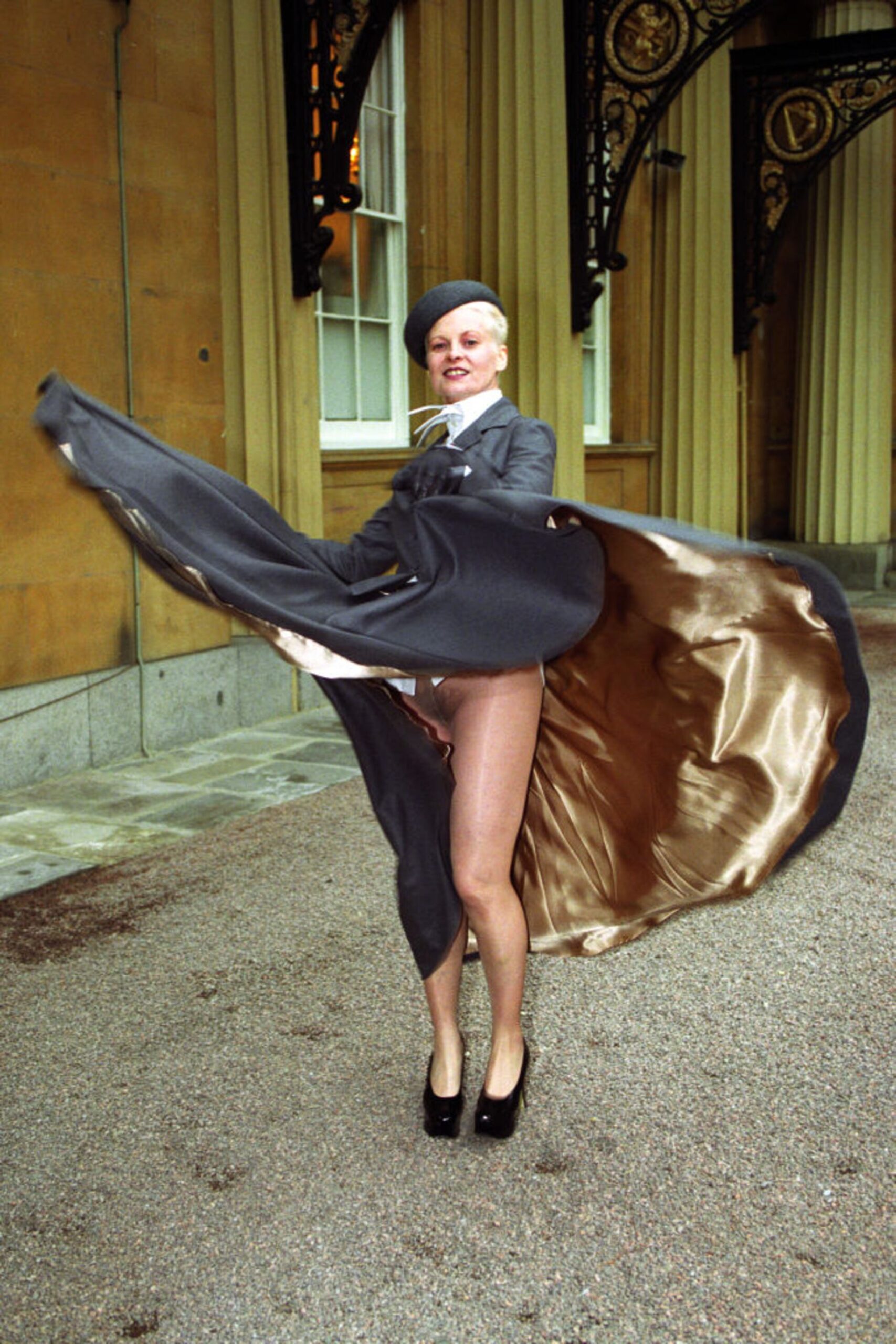
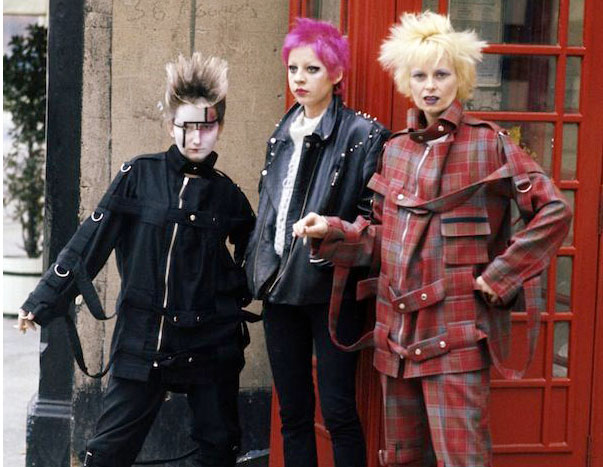
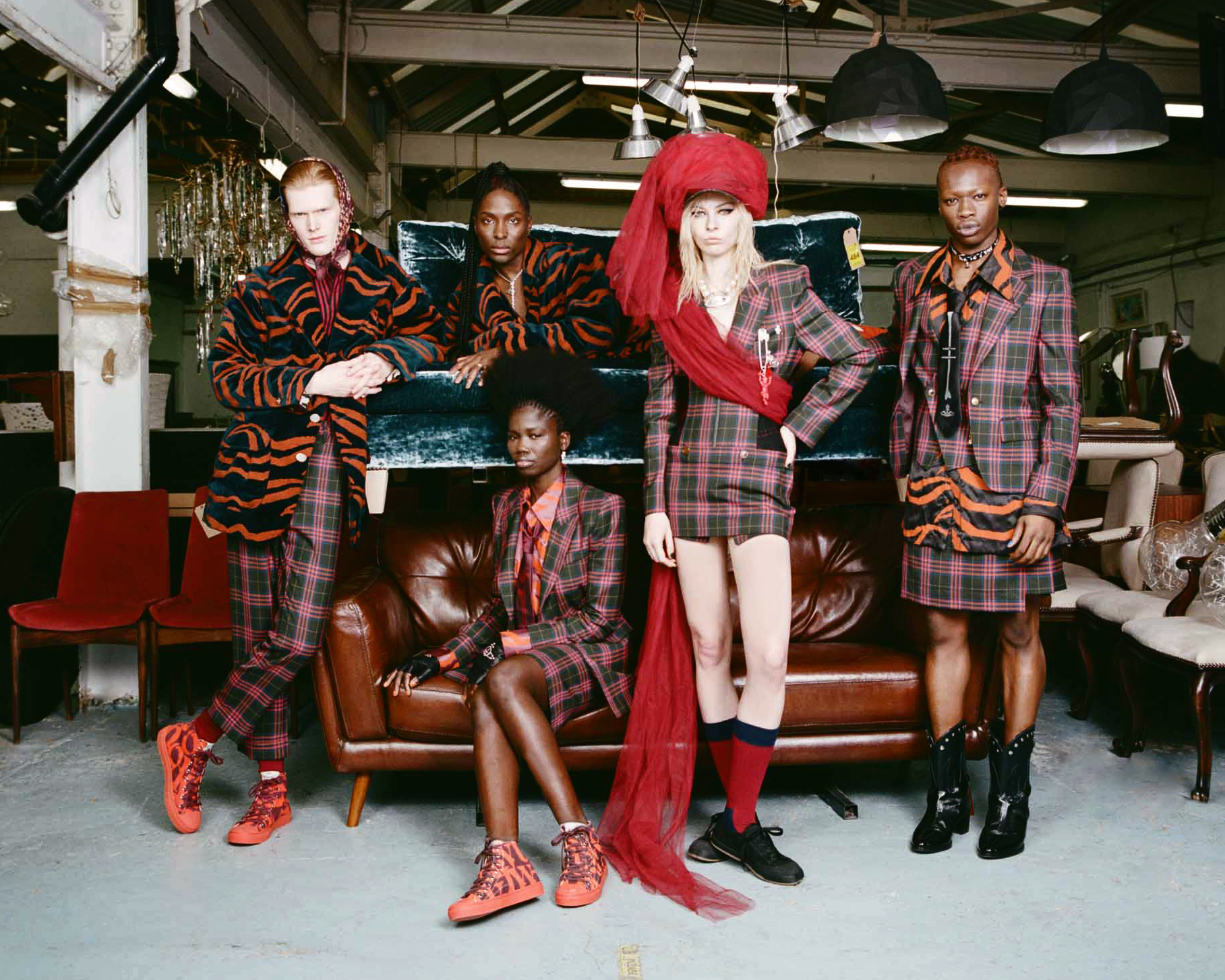
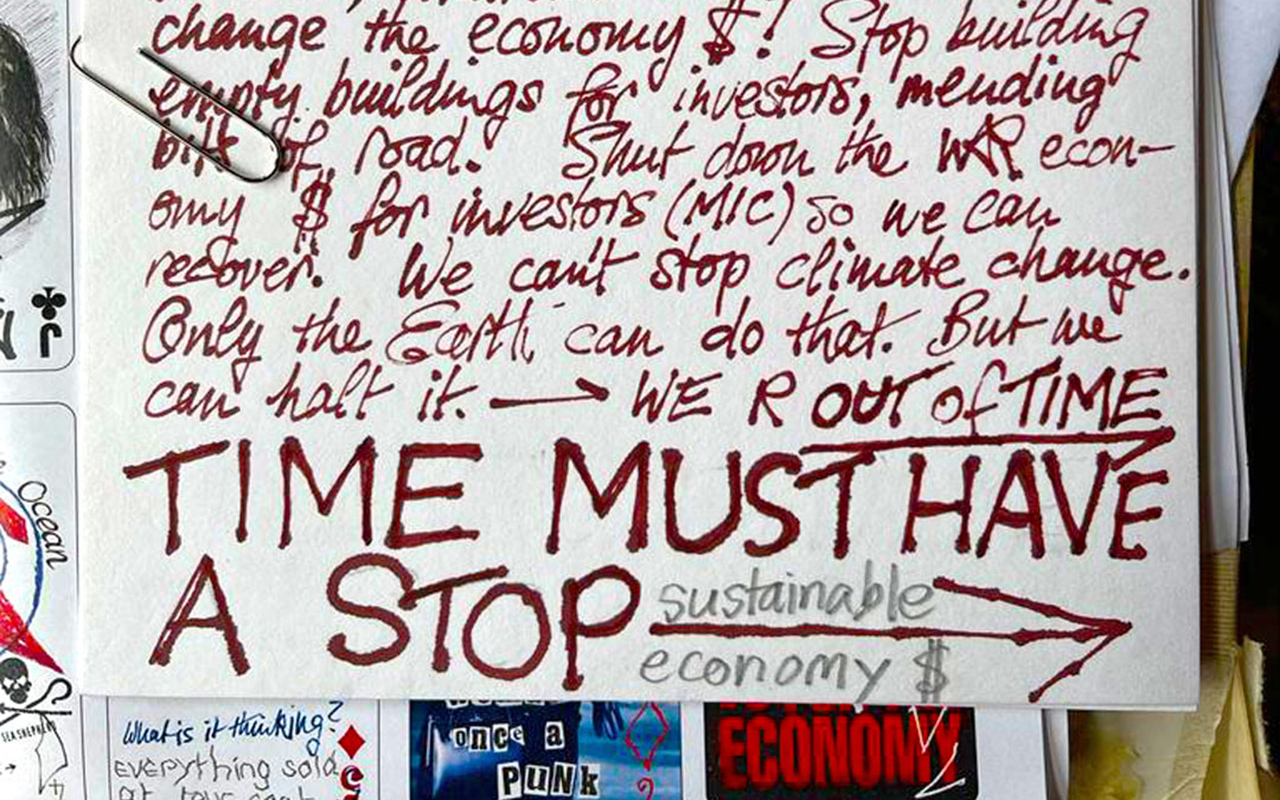
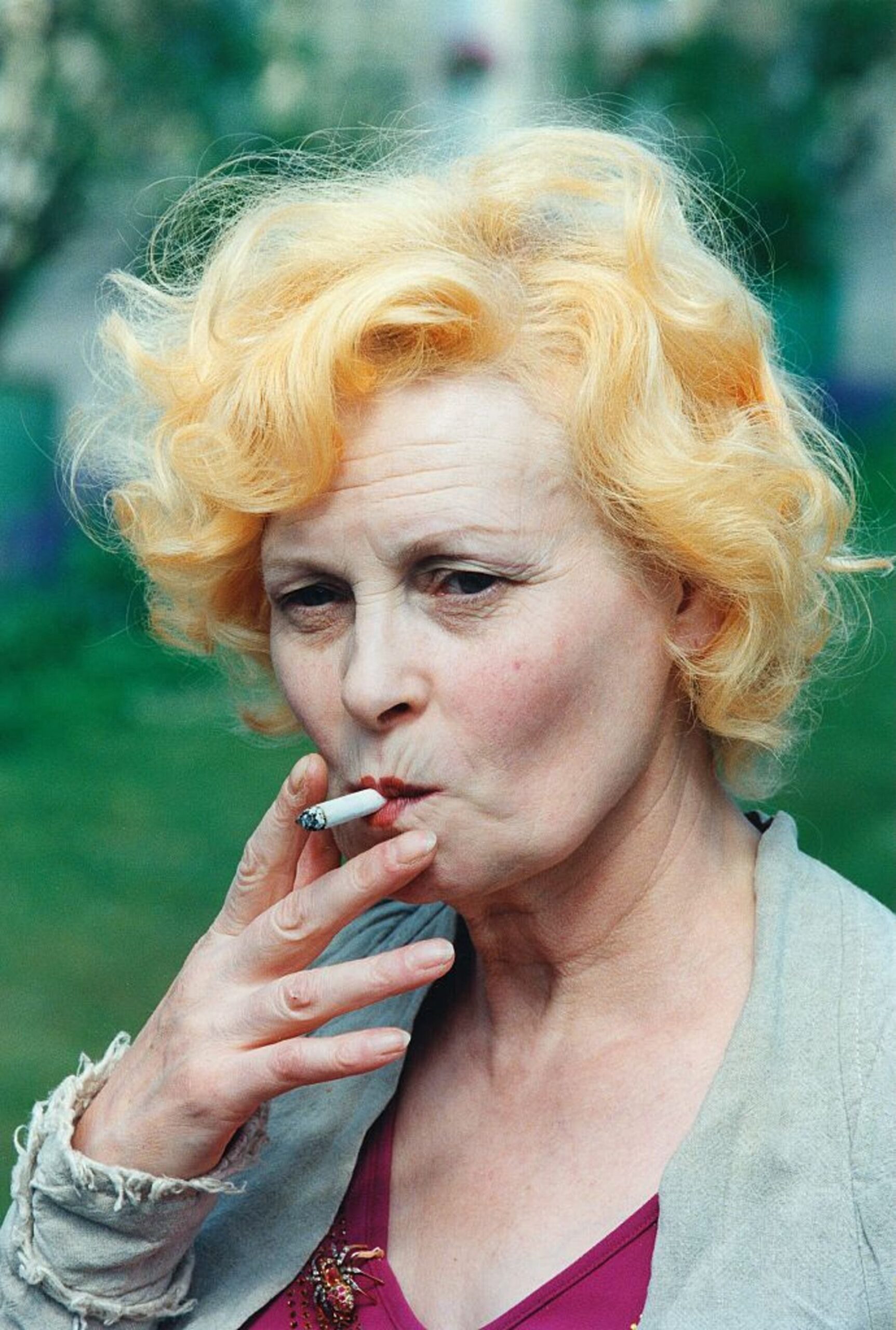

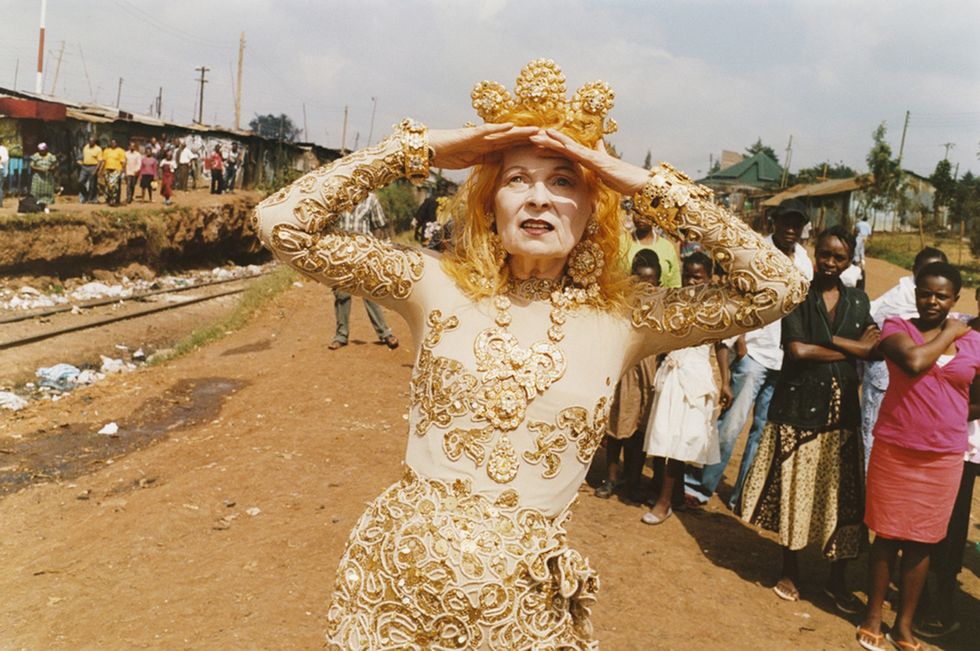

Vivienne Isabel Swire, 8 de abril de 194129 de diciembre de 2022) conocida como Vivienne Westwood, fue una mujer irreverente, provocadora, una de las diseñadoras más visionarias del siglo y, sobre todo, el mayor exponente del punk en la moda. Vivienne Westwood llevó el tartán a las pasarelas y lo mezcló con el cuero, las tachuelas, los clips, las crestas y los colores ácidos.
Era un alma libre que, en su vuelo, atrevido y extravagante, arrastró a personalidades de todos los ámbitos de la cultura y una de las primeras en denunciar los efectos negativos de la industria en el medio ambiente.
A principios de la década de 1960 y casi recién cumplidos los 21 años, se casó con Derek Westwood con quien tuvo un hijo, Ben, y continuó trabajando como profesora. El matrimonio se disolvió y conoció a Malcolm McLaren. La pareja decidió asociarse y montar juntos la tienda de ropa ‘Let it Rock’, en King”s Road, sin imaginar que con el paso de los años que ese establecimiento, que combinaba la música con la moda, terminaría convirtiéndose en todo un referente para la moda punk vistiendo así a las bandas más famosas de la época.
En plena efervescencia londinense, la tienda transformaba su apariencia cada cierto tiempo para acondicionarse a los vaivenes de la moda que ellos mismos inventaban. En 1974 decidieron bautizarla como ‘Sex’, puesto que McLaren se había convertido en el manager de un grupo puntero, Sex Pistols.
La excentricidad y la anarquía eran dos de los lemas de la ropa que creaba Vivienne para su numerosa clientela procedente de las calles, llegando a diseñar ropa de goma, cuero o charol. Su colección de 1976 la denominó ‘Esclavitud’, en la que las prendas se presentaban claveteadas, llenas de hebillas, cremalleras y correas. Fue un éxito total y Vivienne Westwood aportó innumerables ideas que se copiaba a diestro y siniestro.
En 1981 la tienda vuelve a cambiar de nombre, adopta el definitivo de ‘World’s End’ y la diseñadora presenta ‘Pirata’, su primera colección en la que aparecen pantalones de montar y cortes asimétricos, con la que obtiene excelentes críticas.
Al año siguiente y en su afán por innovar y contentar a su multitudinaria clientela, Westwood coloca sujetadores sobre la ropa y exhibe tejidos maltratados en ‘Nostalgia of Mud’ y en su siguiente colección ‘Sorcières’ aparecen las zapatillas de deporte en la pasarela por primera vez. Vivienne toma entonces la decisión de trasladarse a París para realizar sus espectaculares desfiles.
En 1985, con ‘Minicrini’, lanza los zapatos de plataforma, una pieza absolutamente Westwood, como sus corsés, los trajes sastre en tweed escocés y los tailleurs con polisón. A la vez que convierte el tartán, tejido de lana con el que se realizan los cuadros escoceses, en su tejido de vanguardia.
Descarada e iconoclasta, su imagen con la falda levantada sin llevar ropa interior delante del Palacio de Buckingham continúa apareciendo cada cierto tiempo y con ella el espíritu provocativo que la llevó a experimentar sin temores ni restricciones.
Westwood ha sido una fuerza innovadora, fusionando elementos tradicionales británicos con rebeldía subcultural. A lo largo de su carrera desafió las normas con su creatividad y su compromiso con la sostenibilidad. Reconocida con numerosos premios de la moda y nombrada Comendadora de la Orden del Imperio Británico, Vivienne Westwood ha dejado una huella duradera en la industria de la moda y ha sido una defensora apasionada de la conciencia ambiental y la responsabilidad social en el mundo de la moda.
Pese a que murió el 29 de diciembre de 2022 a los 81 años, su legado va más allá de las pasarelas, influyendo en generaciones de diseñadores y estableciendo un estándar elevado para la creatividad y la conciencia en la moda.
Vivienne Isabel Swire (8 April 1941 – 29 December 2022), known as Vivienne Westwood, was an irreverent, provocative woman, one of the most visionary designers of the century and, above all, the greatest exponent of punk in fashion. Vivienne Westwood brought tartan to the catwalks and mixed it with leather, studs, clips, mohawks and acid colours.
She was a free spirit who, in her daring and extravagant flight, dragged along personalities from all walks of life and was one of the first to denounce the negative effects of industry on the environment.
In the early 1960s and almost just after turning 21, she married Derek Westwood with whom she had a son, Ben, and continued to work as a teacher. The marriage dissolved and she met Malcolm McLaren. The couple decided to join forces and set up the clothing store ‘Let it Rock’ together, on King’s Road, without imagining that over the years this establishment, which combined music with fashion, would end up becoming a benchmark for punk fashion, dressing the most famous bands of the time.
In the midst of London’s effervescence, the store changed its appearance from time to time to adapt to the ups and downs of fashion that they themselves invented. In 1974 they decided to name it ‘Sex’, since McLaren had become the manager of a leading group, the Sex Pistols.
Eccentricity and anarchy were two of the slogans of the clothes that Vivienne created for her numerous clientele from the streets, even designing clothes made of rubber, leather or patent leather. Her 1976 collection was called ‘Slavery’, in which the garments were presented studded, full of buckles, zippers and straps. It was a total success and Vivienne Westwood contributed countless ideas that were copied left and right.
In 1981 the store changed its name again, adopting the definitive name of ‘World’s End’ and the designer presented ‘Pirata’, her first collection in which riding breeches and asymmetrical cuts appeared, with which she received excellent reviews.
The following year, in her desire to innovate and please her multitudinous clientele, Westwood placed bras over clothes and exhibited damaged fabrics in ‘Nostalgia of Mud’ and in her next collection ‘Sorcières’, trainers appeared on the catwalk for the first time. Vivienne then made the decision to move to Paris to carry out her spectacular fashion shows.
In 1985, with ‘Minicrini’, she launched platform shoes, an absolutely Westwood piece, like her corsets, Scottish tweed suits and bustle-style suits. While making tartan, the woollen fabric from which Scottish checks are made, her avant-garde fabric.
Brazen and iconoclastic, her image with her skirt up and without underwear in front of Buckingham Palace continues to appear from time to time and with it the provocative spirit that led her to experiment without fear or restrictions.
Westwood has been an innovative force, fusing traditional British elements with subcultural rebellion. Throughout her career she challenged the norms with her creativity and her commitment to sustainability. Recognized with numerous fashion awards and named Commander of the Order of the British Empire, Vivienne Westwood has left a lasting mark on the fashion industry and has been a passionate advocate for environmental awareness and social responsibility in the world of fashion.
Although she died on December 29, 2022 at the age of 81, her legacy goes beyond the catwalks, influencing generations of designers and setting a high standard for creativity and awareness in fashion.
E-10 km 12
Sant Joan de Labritja
Ibiza 07810
Contacto
info@diegomontero.com
+598 95002 765
Costanera a la Barra s/n
El Tesoro
Maldonado 20001
